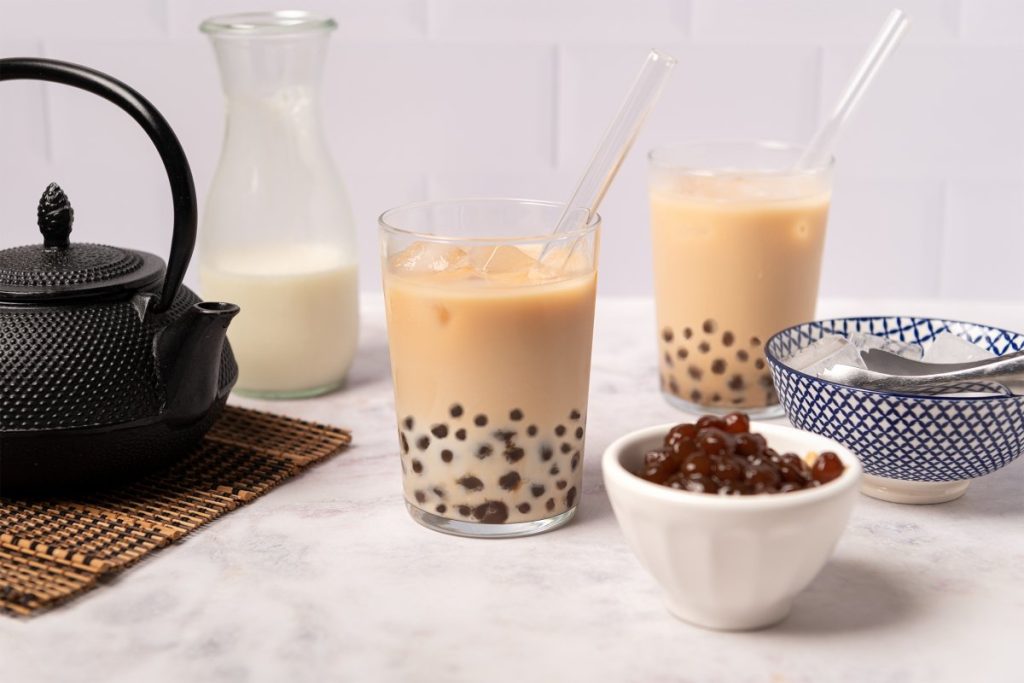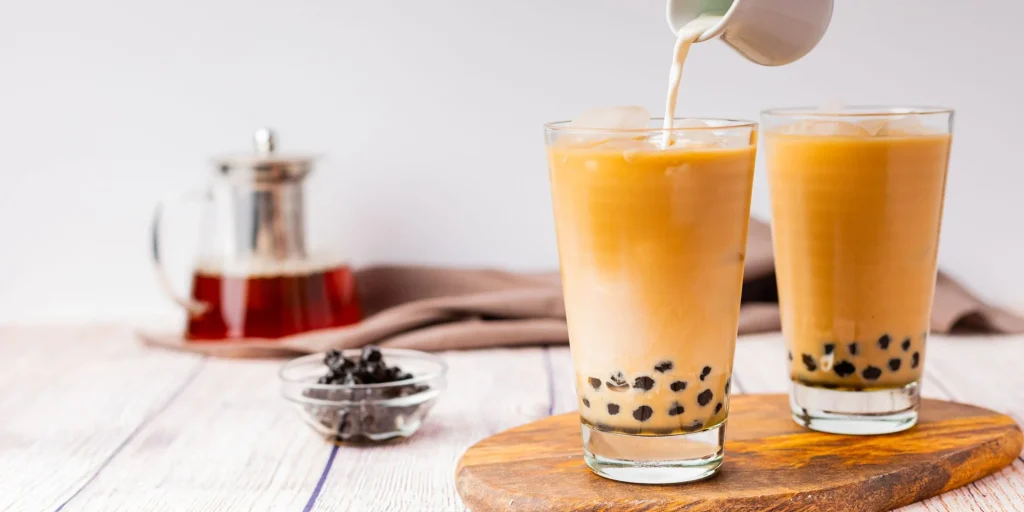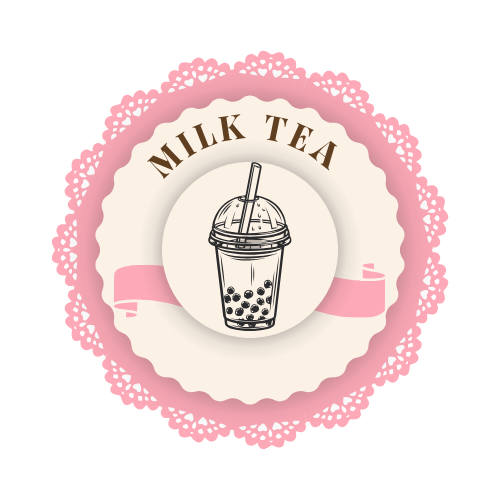Blog
The Science Behind the Perfect Bubble Tea Texture
Bubble tea, a delightful drink originating from Taiwan, has become a global phenomenon loved for its creamy teas, refreshing flavors, and, most notably, its unique textures. The chewy tapioca pearls, jiggly jellies, and silky puddings all contribute to the multi-dimensional experience that bubble tea offers. But what exactly creates these textures? The answer lies in a blend of food science and culinary artistry. In this article, we explore the fascinating science behind the perfect bubble tea texture, uncovering the secrets that make every sip so satisfying.
Why Texture Matters in Bubble Tea
The texture of bubble tea is what makes it distinct from other beverages. Unlike typical drinks that are either liquid or icy, bubble tea incorporates chewable and sometimes creamy elements that create a sensory experience. Texture adds complexity to the drink, making it more than just a beverage—it’s also a snack.
Understanding the science behind these textures helps to appreciate why bubble tea is so special and how each component is crafted to perfection.

The Role of Tapioca Pearls
Tapioca pearls, often referred to simply as “boba,” are the heart of bubble tea. These chewy spheres are made from tapioca starch, derived from the cassava root.
The Chemistry of Chewiness
The key to the perfect tapioca pearl texture lies in its gelatinization process. When tapioca starch is mixed with water and heated, the starch granules absorb water and swell, forming a gel-like structure. This process creates the soft, chewy texture that tapioca pearls are known for.
The temperature during cooking plays a critical role. Tapioca starch begins to gelatinize at around 140°F (60°C) and fully forms its chewy structure at higher temperatures. Cooking the pearls at just the right temperature ensures they achieve the desired elasticity without becoming mushy or hard.
The Secret of Consistency
Tapioca pearls need to be boiled and then simmered for at least 30–45 minutes to develop their texture. After cooking, they are soaked in sugar syrup to maintain their softness and add sweetness. The soaking process also prevents them from hardening as they cool.
Brown Sugar Boba and Its Unique Texture
Brown sugar boba is a variation of tapioca pearls that is cooked in caramelized brown sugar syrup. The syrup not only imparts a deep, molasses-like flavor but also creates a glossy, sticky coating on the pearls. This coating adds an additional layer of texture, making the pearls slightly gooier and more indulgent.
The Science of Jellies
Jellies are another popular topping in bubble tea, adding a contrasting texture to the drink. Common options include grass jelly, coconut jelly, and fruit-flavored jellies.
How Jellies Are Made
Jellies are typically made using gelling agents like agar-agar, gelatin, or konjac. Each gelling agent works differently:
- Agar-Agar: Derived from seaweed, agar-agar forms a firm, jelly-like texture that is stable at room temperature. It’s commonly used for grass jelly.
- Gelatin: Made from animal collagen, gelatin creates a softer, wobbly texture and is used in puddings or certain fruit jellies.
- Konjac: A plant-based gelling agent, konjac produces a chewy texture, perfect for crystal boba or coconut jelly.
Balancing Firmness and Softness
The firmness of the jelly depends on the concentration of the gelling agent and the temperature at which it sets. Higher concentrations lead to firmer textures, while lower concentrations create softer jellies. The setting temperature also affects the texture—rapid cooling can produce a denser jelly, while slower cooling yields a smoother, more uniform consistency.
The Role of Creaminess in Bubble Tea
Creaminess is a vital element of milk tea, contributing to its rich and velvety texture. Achieving the perfect creaminess depends on the type of milk or creamer used.
Whole Milk vs. Non-Dairy Creamers
- Whole Milk: Contains natural fats that emulsify with tea, creating a smooth, creamy texture.
- Non-Dairy Creamers: Often used in bubble tea shops, these creamers include stabilizers and emulsifiers that enhance creaminess. They also tend to have a thicker consistency, making the drink feel more indulgent.
The Science of Froth
Some bubble tea drinks, especially those with cheese foam toppings, incorporate froth for an additional layer of texture. Froth is created by aerating a liquid, introducing air bubbles that give it a light, fluffy texture. Stabilizers like cream or milk proteins help maintain the froth’s structure.
The Chewy Texture of Puddings
Pudding toppings, such as egg pudding or taro pudding, add a creamy and slightly chewy texture to bubble tea.
How Puddings Are Made
Puddings are made by combining ingredients like milk, eggs, sugar, and a thickening agent such as cornstarch or gelatin. Heating the mixture causes the proteins in the eggs to denature and form a network, creating the smooth, custard-like texture.
Key to Perfect Pudding
The cooking temperature and stirring method are critical. Overheating can cause the proteins to over-coagulate, leading to a rubbery texture, while undercooking results in a runny consistency.
Ice and Texture Balance
The amount and type of ice in bubble tea also play a role in the drink’s texture. Crushed ice creates a slushy consistency, while larger ice cubes chill the drink without diluting it too quickly. Ice interacts with the creaminess of the tea and the chewiness of the toppings, affecting the overall mouthfeel.

Customizing Textures for the Perfect Experience
Creating the perfect bubble tea texture is a highly customizable process. Different combinations of tea, milk, and toppings allow for a variety of textures in each sip. Here’s how you can optimize your drink:
- Layer Textures: Combine chewy tapioca pearls with soft pudding or firm jelly for a multi-dimensional experience.
- Adjust Sweetness: The sweetness of the toppings should complement the tea. For example, brown sugar boba pairs well with unsweetened milk tea.
- Experiment with Ratios: The balance of liquid to toppings is crucial. Too many toppings can overwhelm the drink, while too few can make it feel plain.
Why Science Makes Bubble Tea Irresistible
The science behind bubble tea texture ensures that every element—from the chewiness of tapioca pearls to the smoothness of pudding—works harmoniously. This balance of textures not only makes bubble tea enjoyable but also elevates it to a unique culinary art form.
Conclusion
The perfect bubble tea texture is no accident; it’s the result of meticulous attention to detail and a deep understanding of food science. From the gelatinization of tapioca pearls to the aeration of cheese foam, every component is crafted to create a multi-sensory experience. Whether you prefer your bubble tea creamy, chewy, or jiggly, the science behind these textures ensures there’s a perfect combination for everyone.
The next time you sip your favorite bubble tea, take a moment to appreciate the artistry and science that went into creating its delightful textures. After all, it’s this fusion of taste and texture that has made bubble tea a global sensation.


